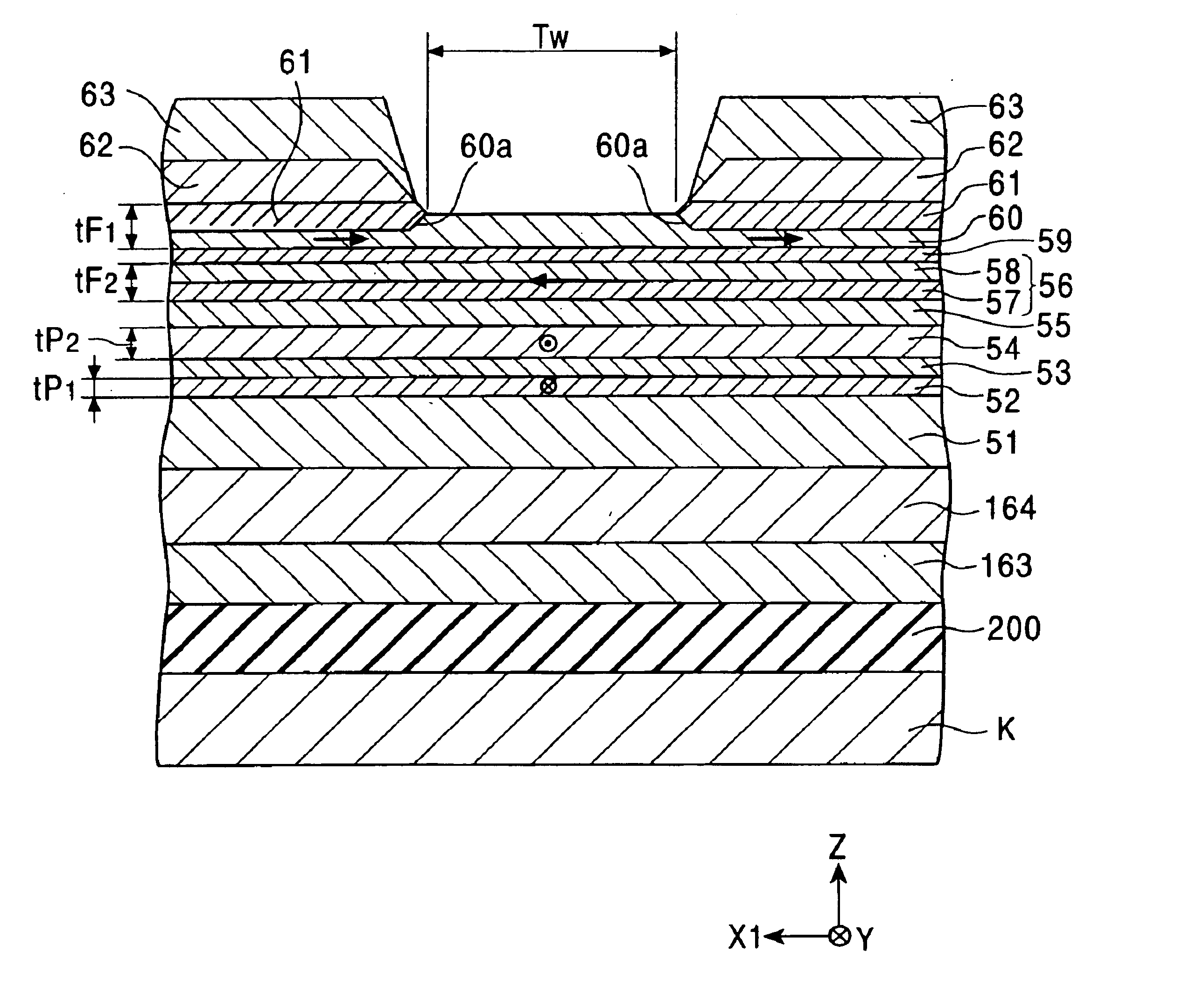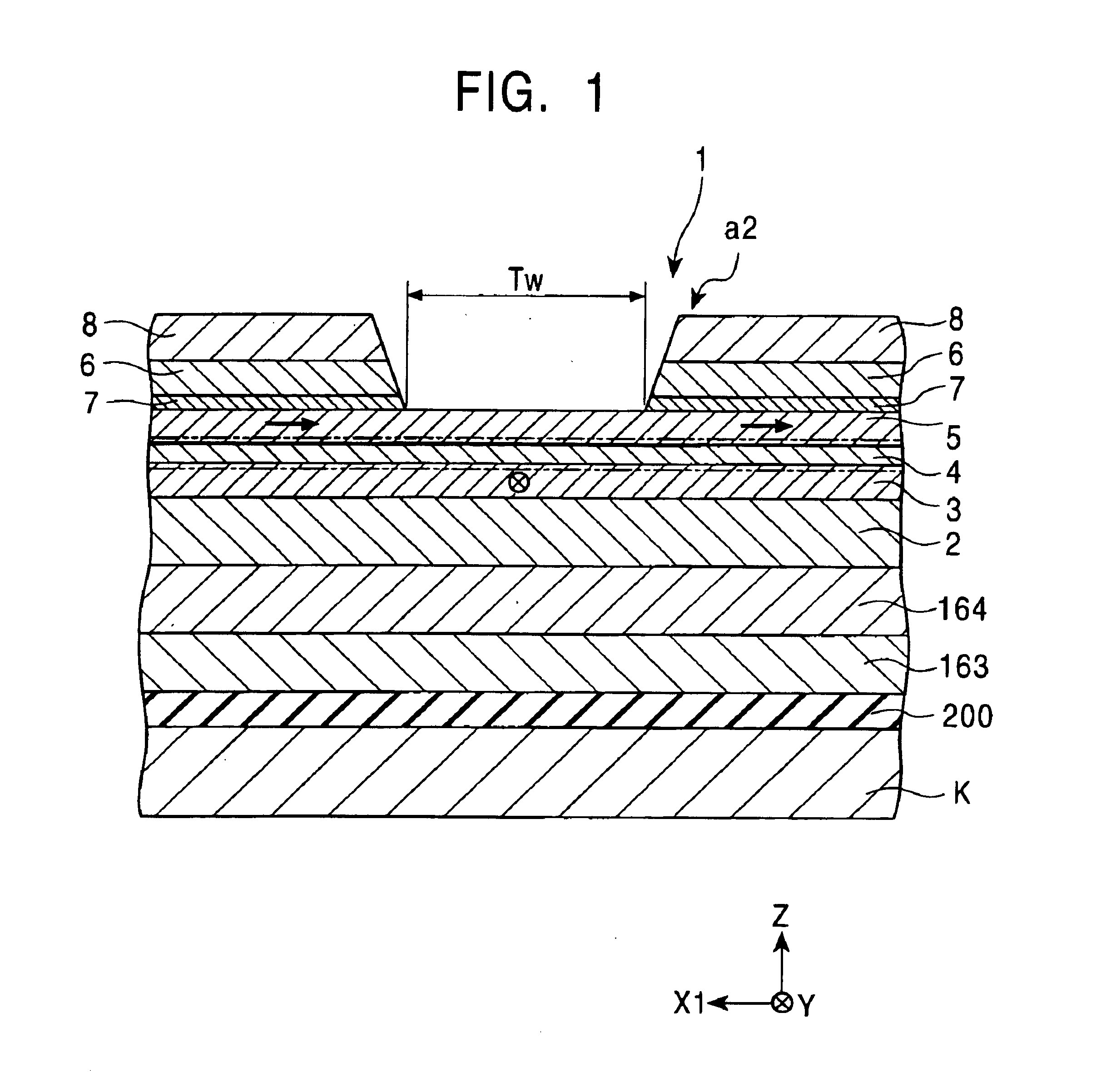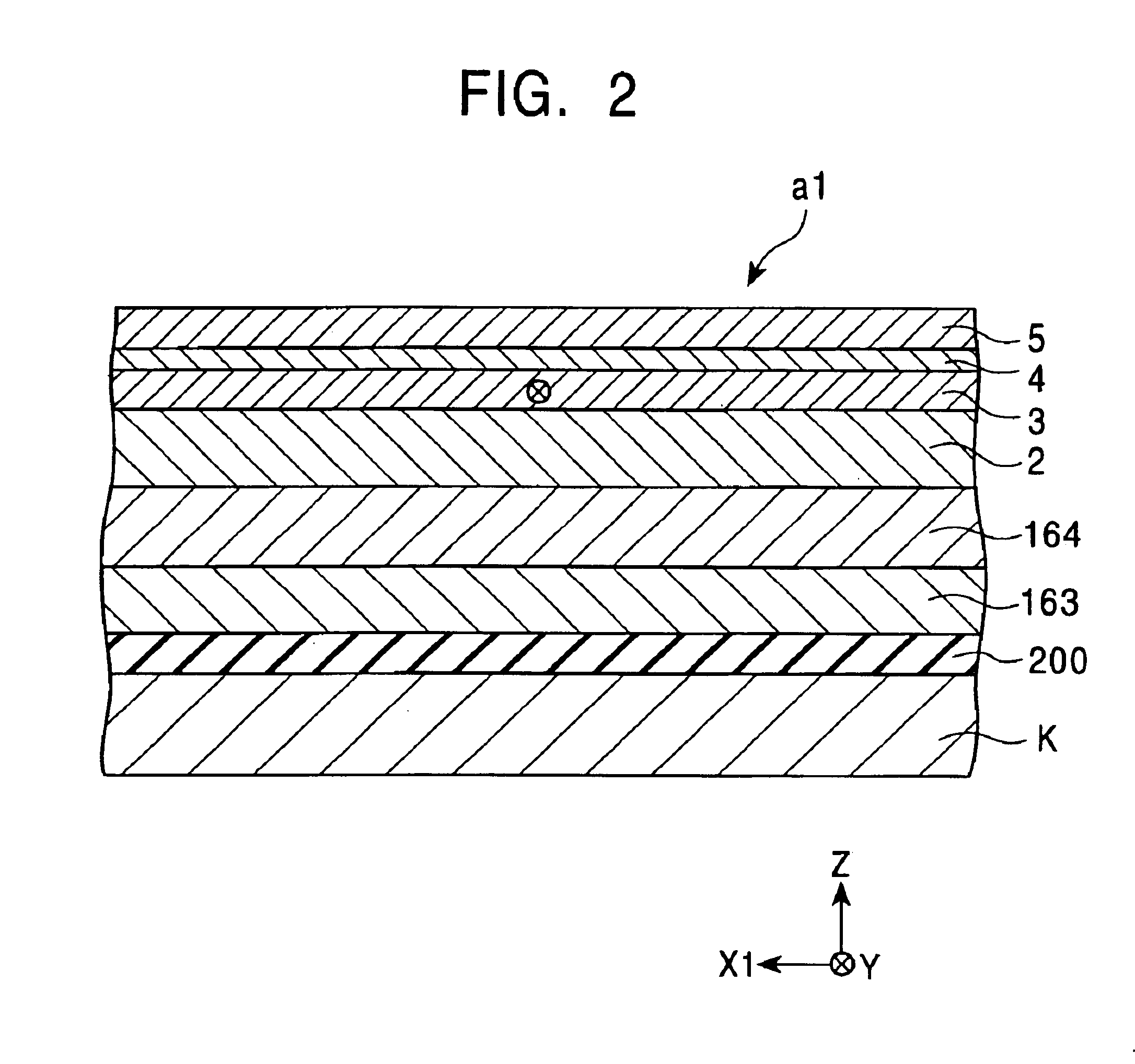Spin-valve type magnetoresistive sensor and method of manufacturing the same
a magnetoresistive sensor and spin-valve technology, applied in the field of spin-valve type magnetoresistive sensor, can solve the problems of difficult to precisely define the track width, difficulty in narrowing the track width to be adapted, and the risk of causing the problem, so as to achieve high reliability and reliable magnetoresistive effect, superior durability, heat resistance and corrosion resistan
- Summary
- Abstract
- Description
- Claims
- Application Information
AI Technical Summary
Benefits of technology
Problems solved by technology
Method used
Image
Examples
first embodiment
[0147]FIG. 1 is a sectional view showing the structure of a spin-valve type magnetoresistive sensor according to a first embodiment of the present invention, as viewed from the side facing a recording medium. FIGS. 5 and 6 are each a perspective view showing a magnetoresistive head including the spin-valve type magnetoresistive sensor according to the first embodiment.
[0148]Above and below the spin-valve type magnetoresistive sensor of the present invention, shielding layers are formed with gap layers interposed therebetween. The spin-valve type magnetoresistive sensor, the gap layers, and the shielding layers cooperatively construct a GMR head h1 for reproduction.
[0149]An inductive head h2 for recording may be layered on the GMR head h1 for reproduction.
[0150]As shown in FIG. 5, the GMR head h1 including the spin-valve type magnetoresistive sensor is provided on a trailing end face 151d of a slider 151 along with the inductive head h2, whereby a magnetoresistive head 150 is constru...
second embodiment
[0313]FIG. 7 is a cross-sectional view schematically showing a spin-valve type magnetoresistive sensor according to a second embodiment of the present invention, and FIG. 8 is a sectional view showing the structure of the spin-valve type magnetoresistive sensor shown in FIG. 7, as viewed from the side facing a recording medium.
[0314]Similarly to the spin-valve type magnetoresistive sensor shown in FIG. 1, the spin-valve type magnetoresistive sensor of this embodiment is also provided, for example, on a trailing end face of a floating slider mounted in a hard disk device, and is used to detect a magnetic field recorded on a hard disk or the like.
[0315]In FIGS. 7 and 8, a Z-direction represents the moving direction of a magnetic recording medium such as a hard disk, and a Y-direction represents the direction of a leakage magnetic field from the magnetic recording medium.
[0316]The spin-valve type magnetoresistive sensor shown in FIGS. 7 and 8 is one of the so-called bottom type single-...
third embodiment
[0350]FIG. 9 is a cross-sectional view schematically showing a spin-valve type magnetoresistive sensor according to a third embodiment of the present invention, and FIG. 10 is a sectional view showing the structure of the spin-valve type magnetoresistive sensor shown in FIG. 9, as viewed from the side facing a recording medium.
[0351]Similarly to the spin-valve type magnetoresistive sensors described above, the spin-valve type magnetoresistive sensor of this embodiment is also provided, for example, on a trailing end face of a floating slider mounted in a hard disk device, and is used to detect a magnetic field recorded on a hard disk or the like.
[0352]In FIGS. 9 and 10, a Z-direction represents the moving direction of a magnetic recording medium such as a hard disk, and a Y-direction represents the direction of a leakage magnetic field from the magnetic recording medium.
[0353]Also in the spin-valve type magnetoresistive sensor of this embodiment, a magnetization direction of a free ...
PUM
| Property | Measurement | Unit |
|---|---|---|
| temperature | aaaaa | aaaaa |
| temperature | aaaaa | aaaaa |
| temperature | aaaaa | aaaaa |
Abstract
Description
Claims
Application Information
 Login to View More
Login to View More - R&D
- Intellectual Property
- Life Sciences
- Materials
- Tech Scout
- Unparalleled Data Quality
- Higher Quality Content
- 60% Fewer Hallucinations
Browse by: Latest US Patents, China's latest patents, Technical Efficacy Thesaurus, Application Domain, Technology Topic, Popular Technical Reports.
© 2025 PatSnap. All rights reserved.Legal|Privacy policy|Modern Slavery Act Transparency Statement|Sitemap|About US| Contact US: help@patsnap.com



